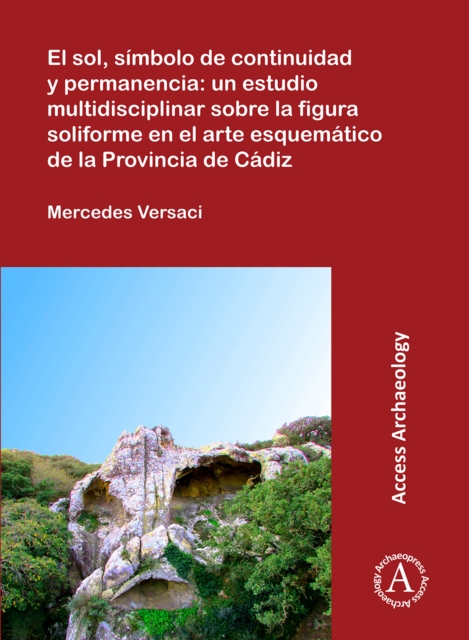
El sol, simbolo de continuidad y permanencia: un estudio multidisciplinar sobre la figura soliforme en el arte esquematico de la Provincia de Cadiz Paperback / softback
by Mercedes Versaci
Paperback / softback
Description
The purpose of this study is to analyze the soliform figures in schematic cave paintings.
The author presents research on all the global factors relevant to the study of these figures (technological, typological, stylistic, semiotic, astronomical, anthropological and landscape) and their relationship with the whole of schematic rock paintings and the societies that produced them.
The geographical scope of the study is the area of Laguna de la Janda and Campo de Gibraltar (Cadiz).
One of the arguments the author maintains in this research is the shortage of studies conducted in the territory of Cadiz in relation to these figures - and to rock art in general, which has been a central motif in almost all primitive religions or mythologies since the birth of agricultural societies.
The recurrence of abstract motifs within the rock art of this area, and its durability over time, could be an indication of common cultural patterns among the different populations that inhabited the province.
But these same signs are also repeated in different parts of the world - could it therefore suggest universal aspects of our species?
The interpretation of these symbols has been - and continues to be - subject to intangible or subjective issues; therefore, it is not exempt from possible projections of our own culture.
We think that we are able to approach, in a scientific way, the ritual and symbolic aspects of those who elaborated these paintings.
In this book, the author proposes an alternative according to the theoretical framework of disciplines such as ethnography, anthropology, landscape archaeology, archaeoastronomy and semiotics.
Information
-
Available to Order - This title is available to order, with delivery expected within 2 weeks
- Format:Paperback / softback
- Pages:228 pages, 156 figures, 38 tables (151 colour pages)
- Publisher:Archaeopress
- Publication Date:31/05/2019
- Category:
- ISBN:9781789691948
Information
-
Available to Order - This title is available to order, with delivery expected within 2 weeks
- Format:Paperback / softback
- Pages:228 pages, 156 figures, 38 tables (151 colour pages)
- Publisher:Archaeopress
- Publication Date:31/05/2019
- Category:
- ISBN:9781789691948






